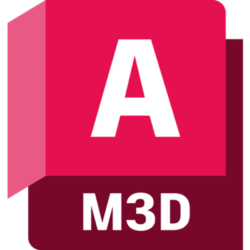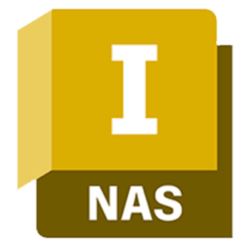Autodesk Robot Structural Analysis 2023 is a very professional and practical structural analysis software. Allows users to perform linear and nonlinear analyzes for building models, bridges, and other types of industrial structures. At present, the software is expanded and distributed to many countries, such as Australia, New Zealand, and South Africa, and in the 2023 version.
These three countries have implemented new code rules in the steel design code update, including member type parameter definition, configuration , lateral buckling parameters, Beta coefficient, moment correction coefficient Alpha\ correction coefficient kt, and changes in additional parameters. Interested friends come to download and use it.
Autodesk Robot Structural analysis software provides a smooth workflow and interoperability with Autodesk Revit Structure software to extend the building information modeling (BIM) process, enabling engineers to perform comprehensive analysis of various structures more quickly.
Create structural models and perform structural analysis within Robotic Structural Analysis Professional, and seamlessly transfer patterns and results to AutoCAD structural detailing software to generate fabrication drawings. In this ecosystem of structural engineering software, structural engineers can leverage an integrated workflow from design, through analysis to fabrication. You can also get Autodesk 3DS Max 2023.
Autodesk Robot Structural Analysis 2023 New Features:
1. higher access
- Enjoy a wide range of tools, technology and service innovations to meet your needs now and in the future.
2. flexible control
- Better manage users and costs by providing access to the right products and updates when your team needs them.
3. Valuable insight
- Evaluate and analyze product usage, spend, productivity and future demand with easy-to-use reporting tools and alerts.
Autodesk Robot Structural Analysis 2023 New Functions:
1. The workflow of BIM integration
Exchange data with Revit and other design tools.
2. Wind load simulation
Test wind loads during the design process to avoid costly changes.
3. Extensive analytical capabilities
Test the behavior of static, modal and nonlinear structures.
4. The current analysis results
Report structural analysis results graphically.
5. Finite element automatic meshing function
Create high-quality, advanced finite element meshes for more accurate analysis results.
6. Design versatility
Autodesk Robot supports the code inspection process and assists in the selection, evaluation and optimization of structural elements.
7. Enhanced: country-specific design standards
Use country-specific section shapes, imperial or metric units, and country-specific building codes.
8. Open and flexible API
Create custom parametric structures, extract results directly from the software, and expand analysis and code inspection capabilities.
Software Highlights
1. Results visualization
1. Customize the number of results
You can now create custom, derived results that are key to quantitative analysis and visualization applications. You can create quantities based on standard CFD domain variables and choose various functions to create your equations. Custom results can be reused in subsequent session quantities, quantities are available in Decision Center.
2. Particle Tracking
Achieve compelling flow visualization faster and more efficiently using an improved particle tracking workflow. You can now access a ribbon of many related commands directly from the Results tab with Particle Tracking activated. Easily customize your results and maximize the impact of your presentations with improved seeding capabilities.
3. Iso volume
Use the Iso volume to view the resulting volume between the maximum and minimum values. Similar to Iso Surfaces, Iso Volumes are useful for visualizing and presenting complex flow results, as well as temperature distributions, from your simulations.
4. Updated workflow, including design studies
Previously, typically you had to move between feature models, ribbons, and bars as an inseparable part of the Design Findings workflow. You can now achieve the same result with a full workflow model, ribbon, or design tree. Use your most comfortable and efficient workflow to achieve analysis results.
2. Modeling
1. Wall layer
The enhancement layer is now called the wall layer. It’s just a terminology change – the relevant functionality is the same.
2. Humidity of heat exchanger
You can now consider the humidification and dehumidification process and heat exchanger materials.
3. Mesh surface wrapped and faceted (STL) models
Introduced a new meshing workflow specifically for model surface wrapping. The process is similar to the process of meshing directly from a CAD model into the system. The requirements and guidelines for generating high-quality meshes suitable for simulations are the same. The biggest difference is that some of the controls for the arrangement and some terms of the fine mesh distribution have been revised for clarity.
4. Model Evaluation Toolkit
Updating the model gap, part of the gap leads to faster analysis, evaluates 5x and 20x improvements in speed, respectively.
5. Surface packaging
The Surface Wrapper tool, introduced as a standalone application with CFD 2023, is now integrated into the CFD 2023 application. You can read your model surfaces directly into the package or first go through the model evaluation kit. Use Surface Encapsulation to easily generate CFD-quality external meshes without extensive CAD cleanup.
6. Hydrostatic pressure
For most flow simulations in Autodesk CFD, we ignore the weight of the column to determine the pressure distribution of the liquid. Where this weight is important, especially when the fluid is at rest or in constant motion, you can now enable Hydrostatic Pressure on the Solve dialog.
7. New solver technology
Autodesk For CFD 2023, a new solution called “CFD2” was developed and offered with limited functionality. You now have full access to this new solver, denoted “Scalable Solver” when you select Solve Computer Analysis.
The scalable solver is designed for large simulations containing 30 to 50 million elements, and enables each process to run on multiple threads in a process/thread hybrid. The scalable solver is designed to optimize cache performance and show significant solution time acceleration for large models when using multiple compute nodes. Performance of smaller models on one compute node with default or “classic” CFD hotshot.
Note: At the time of the initial release of Autodesk CFD 2023, the scalable solver did not support remote solving.





